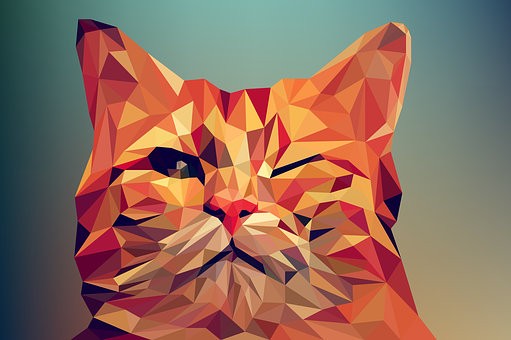Most graphic designers use vector images and not bitmap or pixelated images. What’s the difference? Unlike bitmap images that are made of tiny pixels, vector graphics consist of coordinates. All points on vector images are connected through ‘paths.’ These ‘paths’ can be curved or straight. That’s why graphic editors use vector graphics to create logos, 3D renderings, animated art, etc. out of nothing. Using vector creators is a must for all graphic artists, and here’s why.

How Vector Graphics Became the Norm for Graphic Designers
Since vector graphics consist of ‘paths,’ strict arithmetical formulas need to be used to direct these paths. They were popular in the 1960s, but by the 1980s, pixel-based images had driven vector graphic displays out of the market.
However, the rise of graphic designers made vector graphics popular again. Graphic designers realized that they need to create scalable files. Since bitmap images can only consist of a limited number of pixels, they are not scalable. They start ‘cracking’ when their sizes are altered.
Vector graphics, conversely, are created using mathematical definitions. No matter what screen size, device, etc. they are opened on, each path (line/curve/shape) remains the same. Scalable vector graphics (SVG), the free language used to create vector images, can contain text, embedded bitmap images, shapes, etc.
Since all points in vector images are equivalent to coordinates on a plane, these images almost function as ‘connect the dots’ diagrams. That’s how vector software renders images. They are versatile and ideal for people who want to learn graphic design. To become a graphic artist, editors must find vector creator online and start creating images out of nothing.
Vector graphics fervently impact modern-day design trends in graphic art, digital marketing, etc. Some of their uses include –
- Digital illustrations: From simple icons for apps to complex and realistic movie posters, vector graphics are the number one choice of leading graphic designers worldwide.
- Stats: Data graphs or web-based technical drawings are all created using vector creators. The same applies to Geographic Information Systems (GIS) maps.
- Website Elements – Clicks, website banners, and pretty much all design elements of high-functioning websites use scalable vector graphics. Of course, pixel images are added to these graphics using vector software, but the files are ‘SVG.’
- Modern Art – All video game images/characters that look clean or minimalistic are used in creating vector software.
- 3D renderings: Even printable marketing materials like logos on flyers are created using vector graphics.
There’s an endless list of use cases for vector graphics because they offer numerous benefits, including –
Unlimited Resolution
Vector images never lose image quality, even when users keep zooming in forever. They are resolution-independent as they don’t depend on a limited number of pixels. Any software reading an SVG file will always know which points on the screen represent which pathways. The lines connecting the pathways are always there, even if users zoom in at 10,000.
Adaptable
Since vector images are math-based, they have the capacity to be altered anyway in size. With vector images, graphic designers can depict images of all sizes. Scaling up or down a vector without compromising image quality is very easy. Graphic editors can zoom in on minuscule details to edit the image. With vector editors, graphic designers can scale down images to microscopic proportions and then make them gigantic in seconds without pixelation, blurring, or increasing the file’s size. SVG is the most adaptable image file. A 2MB SVG file contains much more information than a 2MB JPEG file.
Create them From Nothing
The way graphic designers create vector graphics is very similar to the way artists draw on paper – each new pathway is a new building block. On a vector creator, editors generate all types of shapes and create realistic illustrations by adding colors, bitmap images, text data, etc. Unlike bitmap images, vector graphics are also very easy to manipulate as an editor. Scale, skew, invert, and carry out any type of editing trick you want on these images.
Interactive Images
Vector images can interact with users. For instance, the crisp and smooth ‘drag and drop’ buttons on websites are created using scalable vector graphics. That’s why all the best responsive web pages consist of vector graphics. Since there’s no limit to how much animation, shapes, text, etc. can be added to vector images, it is very easy for graphic designers to create responsive images.
Using SVG
Adobe Photoshop, the most-used image-editing software on the planet, is a strict raster editor that doesn’t support SVG (scalable vector graphics) files. That’s why using online creators is a much better option. On these vector programs, aspiring graphic editors can –
- Draw all types of shapes
- Manipulate all design elements by scaling their shapes, tilting them, etc. and so on.
- Use filtered pixel images.
- Create unique color gradients
- Create realistic and precise illustrations
Use vector image editors to become graphic designers now!
